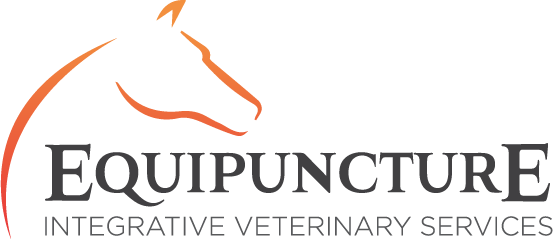SHOCKWAVE FAQ
We now offer shockwave therapy! Shockwave can be used as a standalone service or in conjunction with the other therapies we offer (acupuncture and chiropractic) to treat common soft-tissue and orthopedic injuries. Our shockwave machine is adjustable to comfort level and very quiet — it is generally well tolerated without sedation.
The treatment protocol (number of shocks used, frequency of treatments, total number of treatments, etc) is individualized and depends on the issue being targeted. Please contact us today to discuss more!
-
Shockwave, or extracorporeal shockwave therapy (ESWT), is a non-invasive therapy used to treat soft-tissue and orthopedic injuries. “Extracorporeal” indicates that the treatment is given from outside the horse’s body. The shockwave is an acoustic pressure wave that causes biochemical changes in living tissue stimulating healing. Initially developed in human medicine to break up kidney stones, ESWT was then adapted to treat human pseudoarthrosis (non-unions) with the first successful case reported in 1988. Now, it is widely used in human and veterinary medicine, along with other modalities, to treat musculoskeletal problems.
-
The shockwave machine consists of a therapy source, or probe, attached to a generator. Together, the generator and probe, create and focus an acoustic pressure wave to target and reach peak pressure at a specific point or area within a tissue. This pressure wave then creates biochemical changes within that tissue, such as:
Increased blood flow
Osteogenic factors (bone stimulation)
Analgesic effects (pain relief)
Regulated and reduced inflammation
Chondroprotective effects
There are several different shockwave systems available. One very common system, an electrohydrolic system, uses a spark plug to create the energy necessary for the shockwave - this is very loud and often not tolerated by horses without sedation. However, our shockwave machine, uses a piezoelectric system to create the shockwave through high pressure — this system is quiet, the intensity is easy to adjust, and it typically requires no sedation.
-
Shockwave therapy is commonly used to treat:
Tendinopathy/Tendinitis
Desmitis, such as proximal suspensory desmitis
Navicular syndrome
Overriding dorsal spinous processes (kissing spines)
Sacroiliac (SI) pain and dysfunction
Back pain
Osteoarthritis (OA) or degenerative joint disease, such as bone spavin
Wounds
Stress fractures
Splint bone fractures
-
Shockwave therapy is a safe, non-invasive, outpatient procedure — so it can be performed right in your barn. The only things required are a safe working space and access to electricity!
Our shockwave machine, the PiezoWave, is very quiet and typically very well tolerated without sedation. In addition, our machine has various settings which allows us to adjust the treatment to each horse’s needs and comfort level.
Appointments typically take about 10-15 minutes, depending on how many areas are being treated. When combined with chiropractic or acupuncture appointments will take closer to 45-60 minutes.
One treatment area typically requires about 1000 shocks and pricing is based on the total number of shocks used. A typical treatment regimen requires a total of one to four treatments at two- to four-week intervals.
Based on the individual horse, we will determine the focal area(s), the number of shocks, and the ideal treatment regimen for your horse’s needs.
Additional resources:
Quick Reads:
Extracorporeal Shock Wave Therapy in Horses: What We Know by Dr. Scott McClure
Shockwave Therapy and Kissing Spines by Dr. Matt LeShaw
Shock Wave Uses and Benefits by Dr. Stacey Oke
Literature Highlights:
(2020) Shockwave History. The International Society for Medical Shockwave Treatment. https://www.shockwavetherapy.org/about-eswt/shockwave-history/
Dyson, S. J. (1995). Proximal suspensory desmitis in the hindlimb. Equine Veterinary Education, 7(5), 275-278.
McClure, S., & Weinberger, T. (2003). Extracorporeal shock wave therapy: clinical applications and regulation. Clinical techniques in equine practice, 2(4), 358-367.
McClure, S.R., et al. (2004a) Extracorporeal shock wave therapy for treatment of navicular syndrome. In: Proc. 50th Ann. Convention of the Amer. Ass. of Equine Practitioners, Denver, Colorado, Dec. 4-8, p. 316-319.
Trager, L.R., et al (2020) Extracorporeal shockwave therapy raises mechanical nociceptive threshold in horses with thoracolumbar pain. Equine Veterinary Journal, 52(2), 250-257.
